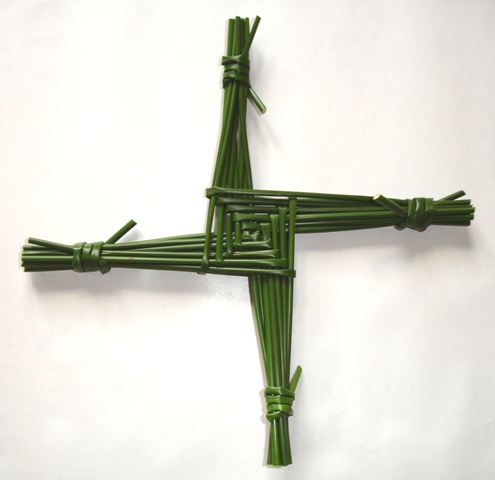This festival celebrates Brigid, a medieval Irish Christian saint who had a convent in the town of Kildare (Cill Dara ‘the grove of the oak’). She is thought to have associations with a pagan fire deity, and accounts tell of her followers stoking an eternal fire for centuries after her death. A legend tells of Brigid petitioning the pagan King of Leinster for a tract of land on which to build her convent. The king stipulated that she could have only the amount of land that her cloak covered. Through her faith in God, the cloak grew until it encompassed enough territory to build her convent. It is still a common practice in parts of Ireland to tie a piece of cloth (brat Bhríde ‘Brigid’s cloak’) to a tree branch on St. Brigid’s Eve to invoke the saint’s blessing.
The date also coincides with Imbolc, a pre-Christian quarterly festival which marked the beginning of spring. Imbolc also heralded the start of the calving season, which meant that milk and butter would be available once again after the dry winter months. Brigid was considered a patron of the dairy according to folk tradition, and many rituals were performed to promote the milk yield. One of these involved fashioning a straw doll or Brídeóg, decorated with rags, shells and flowers. Young boys and girls would carry the Brídeóg in a procession from house to house where they would perform a song to Brigid.
St. Brigid’s crosses are particularly emblematic of this holiday. The most common form is the four-legged variety where a bunch of reeds or straw is woven into a cross-shape. This is made by folding one straw tightly around the centre of an upright straw, then moving 90° each time, folding a new straw around the upright one.
 You can test your Irish comprehension by listening to this beautiful song for Saint Brigid sung in Irish by Aoife Ní Fhearraigh. If you want to follow along, the lyrics are posted in Irish and in English in the comments on the youtube page.
You can test your Irish comprehension by listening to this beautiful song for Saint Brigid sung in Irish by Aoife Ní Fhearraigh. If you want to follow along, the lyrics are posted in Irish and in English in the comments on the youtube page.
